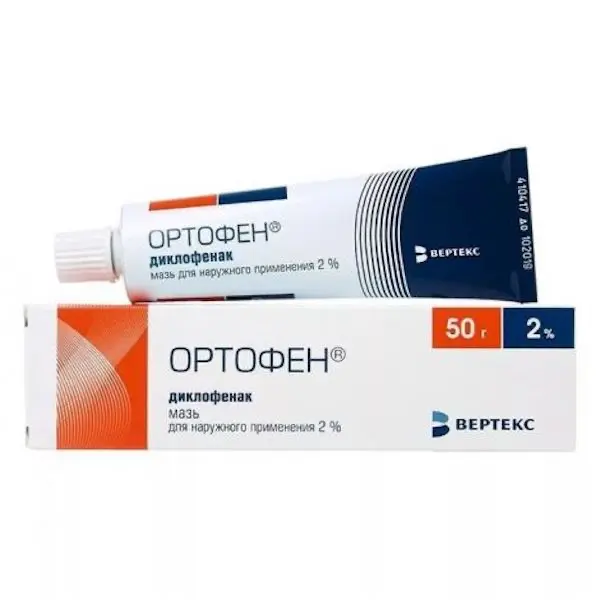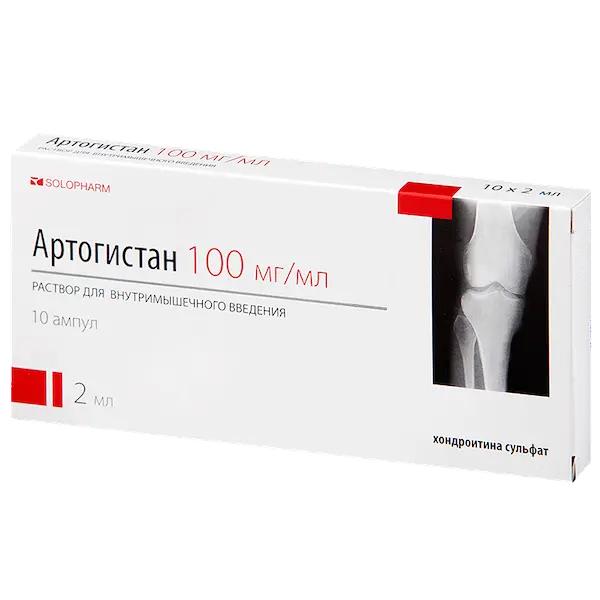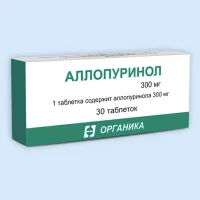Description
Orthofen Pharmacodynamics
NSAID, a derivative of phenylacetic acid. It has a pronounced anti-inflammatory, analgesic and moderate antipyretic effect. The mechanism of action is associated with inhibition of COX activity – the main enzyme of arachidonic acid metabolism, which is a precursor of prostaglandins that play a major role in the pathogenesis of inflammation, pain and fever. Analgesic effect is due to two mechanisms: peripheral (indirectly, through inhibition of prostaglandin synthesis) and central (due to inhibition of prostaglandin synthesis in central and peripheral nervous system).
Inhibits the synthesis of proteoglycan in cartilage.
In rheumatic diseases it reduces joint pain at rest and on movement, as well as morning stiffness and joint swelling, helps increase range of motion. Reduces post-traumatic and post-operative pain, as well as inflammatory edema.
Inhibits platelet aggregation. Has a desensitizing effect when used for a long time.
When used topically in ophthalmology it reduces edema and pain in inflammatory processes of non-infectious etiology.
Indications
Joint syndrome (rheumatoid arthritis, osteoarthritis, ankylosing spondylitis, gout), degenerative and chronic inflammatory diseases of the musculoskeletal system (osteochondrosis, osteoarthritis, periarthropathy), post-traumatic inflammation of soft tissue and musculoskeletal system (sprains, bruises). Spinal pain, neuralgia, myalgia, arthralgia, pain syndrome and inflammation after operations and injuries, pain syndrome with gout, migraine, algodysmenorrhea, pain syndrome with adnexitis, proctitis, colic (biliary and renal), pain syndrome with inflammatory diseases of the ENT organs.
For local use: inhibition of miosis during cataract surgery, prevention of cystoid macular edema associated with lens removal and implantation, eye inflammatory processes of non-infectious nature, post-traumatic inflammatory process with penetrating and non-penetrating wounds of the eyeball.
Contraindications
Gastrointestinal erosive-ulcerative lesions in the acute phase, “aspirin triad”, hematopoiesis disorders of unknown etiology, hypersensitivity to diclofenac and components of the dosage form, or other NSAIDs.
Dosage and administration
- The dosage for oral administration in adults is 25-50 mg – 2 to 3 times. Dosage frequency depends on the applied dosage form, the severity of disease course and is 1-3 times, rectally – once/ For treatment of acute conditions or to relieve acute exacerbations of chronic processes, a dosage of 75 mg is used in a/M dose.
- For children over 6 years of age and adolescents the daily dose is 2 mg/kg.
- Outwardly it is used in a dose of 2-4 g (depending on the area of disease) on the affected place 3-4
- When used in ophthalmology the frequency and duration of administration are determined individually.
- Maximum daily dose for adults when administered orally is 150 mg





